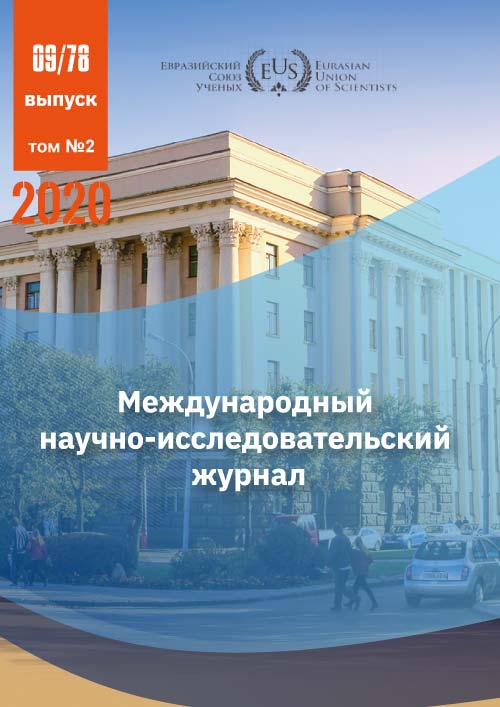COMPREHENSIVE ANALYSIS OF BRAIN DYSFUNCTION IN LONG-TERM MINE-EXPLOSIVE TRAUMATIC BRAIN INJURY OUTCOME
Abstract
This study results the clinical, neurological, neuropsychological and neurophysiological research of 64 patients with long-term outcime of light mine-explosive closed craniocerebral trauma. The examined patients were divided into 2 groups according to the severity of clinical symptoms. A group of patients with complicated posttraumatic period who had vestibular, cochlear and extrapyramidal disorders were selected, characterized by pronounced manifestations of mental processes inertia and violation of their arbitrary regulation, the presence of disorganization of cerebral electrogenesis with fronto-temporal parts of the brain involvement. We identified the system disorders of a brain function ,which considerably complicate the further mental and social adaptation of these patients.
References
2. Cernak I. Understanding blast-induced neurotrauma: how far have we come? Concussion. 2017;2:CNC42. [PMC free article] [PubMed] [Google Scholar]
3. Yamamoto, Satoshi and DeWitt, Douglas S. and Prough, Donald S. Blast Traumatic Brain Injury:
Implications for Therapy /J.Molecules. - 2018. Vol.
(23). № 245. PubMedID 29373501, doi
10.3390/molecules23020245, https://www.mdpi.com/1420-3049/23/2/245.
4. Бовт Ю.В., Гоженко А.І., Забродіна Л.П., Коршняк В.О., Кас Ю.В., Криничко В.В., Насібуллін Б.А., Привалова Н.М., Сухоруков В.І. Гостра бойова контузійна черепно-мозкова травма: патогенез, діагностика, лікування /за редакцією Коршняка В.О. – Харків: ФОП Лібуркіна А.М.,
2018р.- 156с.
5. Chebotariova, Lidia & Solonovych, Oleksandr
& Kadzhaya, Mykola & Tretiakova, Albina & Solonovych, Anastasiia & Pronoza-Stebliuk, Kateryna & Stebliuk, Vsevolod. (2019). Risk factors of cognitive impairment in patients with blast-related mild traumatic brain injury. Ukrainian Neurosurgical Journal. 25. 1624. 10.25305/unj.174610.
6. Nelson NW, Davenport ND, Sponheim SR, Anderson CR. BlastRelated Mild Traumatic Brain Injury: Neuropsychological Evaluation and Findings. In: Kobeissy FH, editor. Brain Neuro trauma: Mole cular, Neurop sychological, and Rehabilitation Aspects. Boca Raton (FL): CRC Press/Taylor & Francis; 2015. Chapter 32. PMID: 26269927.
7. Сухоруков В.В., Забродина Л.П., Бовт Ю.В. Современные представления о травматическом повреждении головного мозга минно-взрывного характера легкой степени тяжести //Wschodnioeuropejskie Czasopismo Naukowe (East European Scientific Journal) - 2020 - 5(57) –С.4-8.
8. Agoston DV. Modeling the Long-Term Consequences of Repeated Blast-Induced Mild Traumatic Brain Injuries. J Neurotrauma. 2017 Sep;34(S1):S44-S52. doi: 10.1089/neu.2017.5317. PMID: 28937952; PMCID: PMC5610388.
9. Kamnaksh A, Ahmed F, Kovesdi E, Barry ES, Grunberg NE, Long JB, et al. Molecular mechanisms of increased cerebral vulnerability after repeated mild blast-induced traumatic brain injury. Transl Proteomics (2014) 3:22–37. doi: 10.1016/j.trprot.2013.11.001
10. Bailes JE, Petraglia AL, Omalu BI, Nauman E, Talavage T. Role of subconcussion in repetitive mild traumatic brain injury. J Neurosurg. 2013;119:1235-
1245. [PubMed] [Google Scholar]
11. McKee A.C., Stein T.D., Kiernan P.T., and Alvarez V.E. (2015). The neuropathology of chronic traumatic encephalopathy. Brain Pathol. 25, 350–364 [PMC free article] [PubMed] [Google Scholar]
12. Howe LL. Giving context to post-deployment post-concussive-like symptoms: blast-related potential mild traumatic brain injury and comorbidities. Clin Neuropsychol. 2009;23:1315-1337. [PubMed] [Google Scholar]
13. Hicks RR, Fertig SJ, Desrocher RE, Koroshetz WJ, Pancrazio JJ. Neurological effects of blast injury. J
Trauma. 2010 May;68(5):1257-63. doi: 10.1097/TA.0b013e3181d8956d. PMID: 20453776; PMCID: PMC2958428.
14. Бовт Ю.В.. Забродіна Л.П., Коршняк В.О., порушення функцій головного мозку у віддаленому періоді вибухової закритої черепно-мозкової травми: клінічний випадок // Український вісник психоневрології – 2019 -Том 27, випуск 4 (101) – С.91-93
15. Fievisohn E, Bailey Z, Guettler A, VandeVord P. Primary blast brain injury mechanisms: current knowledge, limitations, and future directions. J Biomech Eng. (2018) 140:020806. doi: 10.1115/1.4038710
16. Nakagawa A, Manley GT, Gean AD, Ohtani K, Armonda R, Tsukamoto A, et al. Mechanisms of primary blast-induced traumatic brain injury: insights from shock-wave research. J Neurotrauma (2011) 28:1101–19. doi: 10.1089/neu.2010.1442
17. Yeoh S, Bell ED, Monson KL. Distribution of blood-brain barrier disruption in primary blast injury. Ann Biomed Eng. (2013) 41:2206–14. doi: 10.1007/s10439-013-08
18. Reid M.W. and Velez C.S. (2015).
Discriminating military and civilian traumatic brain injuries. Mol. Cell Neurosci. 66, 123–128 [PubMed] [Google Scholar]
19. Greer N, Sayer N, Koeller E, Velasquez T, Wilt TJ. Outcomes associated with blast versus nonblast-related traumatic brain injury in US military service members and veterans: a systematic review. J Head Trauma Rehabil. 2018;33:E16-E29. [PubMed] [Google Scholar]
20. Kamnaksh A, Ahmed F, Kovesdi E, Barry ES, Grunberg NE, Long JB, et al. Molecular mechanisms of increased cerebral vulnerability after repeated mild blast-induced traumatic brain injury. Transl Proteomics (2014) 3:22–37. doi: 10.1016/j.trprot.2013.11.001
CC BY-ND
A work licensed in this way allows the following:
1. The freedom to use and perform the work: The licensee must be allowed to make any use, private or public, of the work.
2. The freedom to study the work and apply the information: The licensee must be allowed to examine the work and to use the knowledge gained from the work in any way. The license may not, for example, restrict "reverse engineering."
2. The freedom to redistribute copies: Copies may be sold, swapped or given away for free, in the same form as the original.







